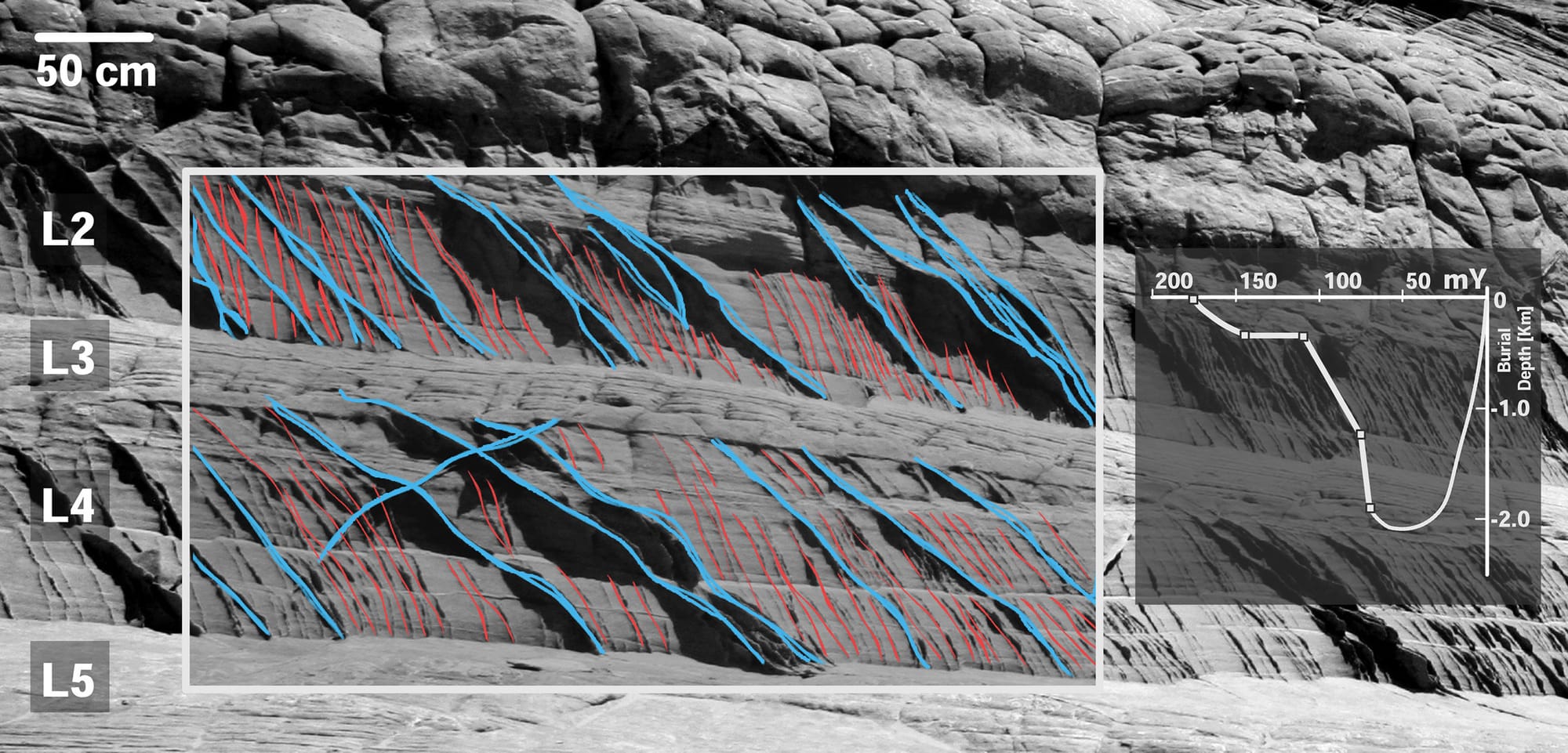The Role of Stratigraphy and Loading History in Generating Complex Compaction Bands in Idealized Field‐Scale Settings

The Buckskin Gulch locality in Utah is a landmark example of compaction localization. The outcrop of this locality involves distinct stratigraphic heterogeneity and was exposed to complex loading history. It features multiple sets of deformation bands with different kinematics and orientation. Similar formations were seen in the Valley of Fire, Nevada, and the Orange quarry, France, among other localities. The formation of such complex structures, their propagation mechanisms, and frequency is affected by numerous local and ambient factors whose impacts are not yet fully understood. The simulation of the above-mentioned localities is not feasible because of the limited amount of available information. This work, instead, investigates from a geomechanics standpoint how the interplay among material nonlinearity, outcrop stratigraphy, and loading history interconnects with specific spatiotemporal patterns of compaction band propagation. Our study shows that the system stratigraphy can be responsible for the emergence of coexisting compaction bands with different inclination and kinematics. Specifically, we show that stiffness contrasts induce nonlocal stress changes which may favor the initiation of secondary structures with different compaction localization characteristics. Furthermore, systems of inclined compaction bands induced by burial increase display secondary, non-contemporaneous sets of vertical compaction bands under the effects of post-burial shortening. Our results indicate that stages of intermediate burial decrease prior to tectonic shortening can promote the formation of such complex systems. Despite the simplifications involved in our analyses, these findings show how geomechanics computations complement field observations and could provide a mechanics-based validation of site-specific reconstruction hypothesis.